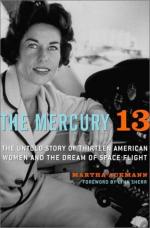|
This section contains 1,182 words (approx. 4 pages at 300 words per page) |

|
In ancient Rome, Mercury was the mythical messenger of the gods. His winged helmet and sandals represented his ability to run extremely fast. Ancient astronomers immortalized him by giving the name Mercury to the planet that circled the Sun in the shortest amount of time. In 1958 speed was very much on the minds of the managers of the National Aeronautics and Space Administration (NASA). Speed was critical to meeting the goal of the Mercury program: to launch an astronaut into orbit and safely return him to Earth.* To achieve that goal NASA would have to accelerate a vehicle containing an astronaut, life support equipment, and other systems to more than 29,000 kilometers (18,000 miles) per hour. Speed was also critical in another sense. NASA was expected to achieve the goal of piloted orbital flight before the Soviet Union did so to help the United States gain the lead...
|
This section contains 1,182 words (approx. 4 pages at 300 words per page) |

|


